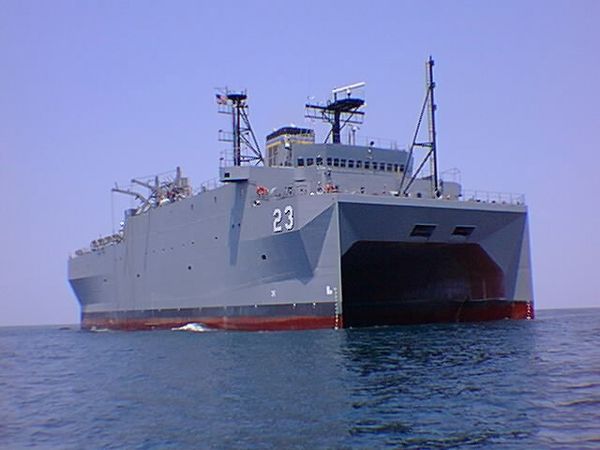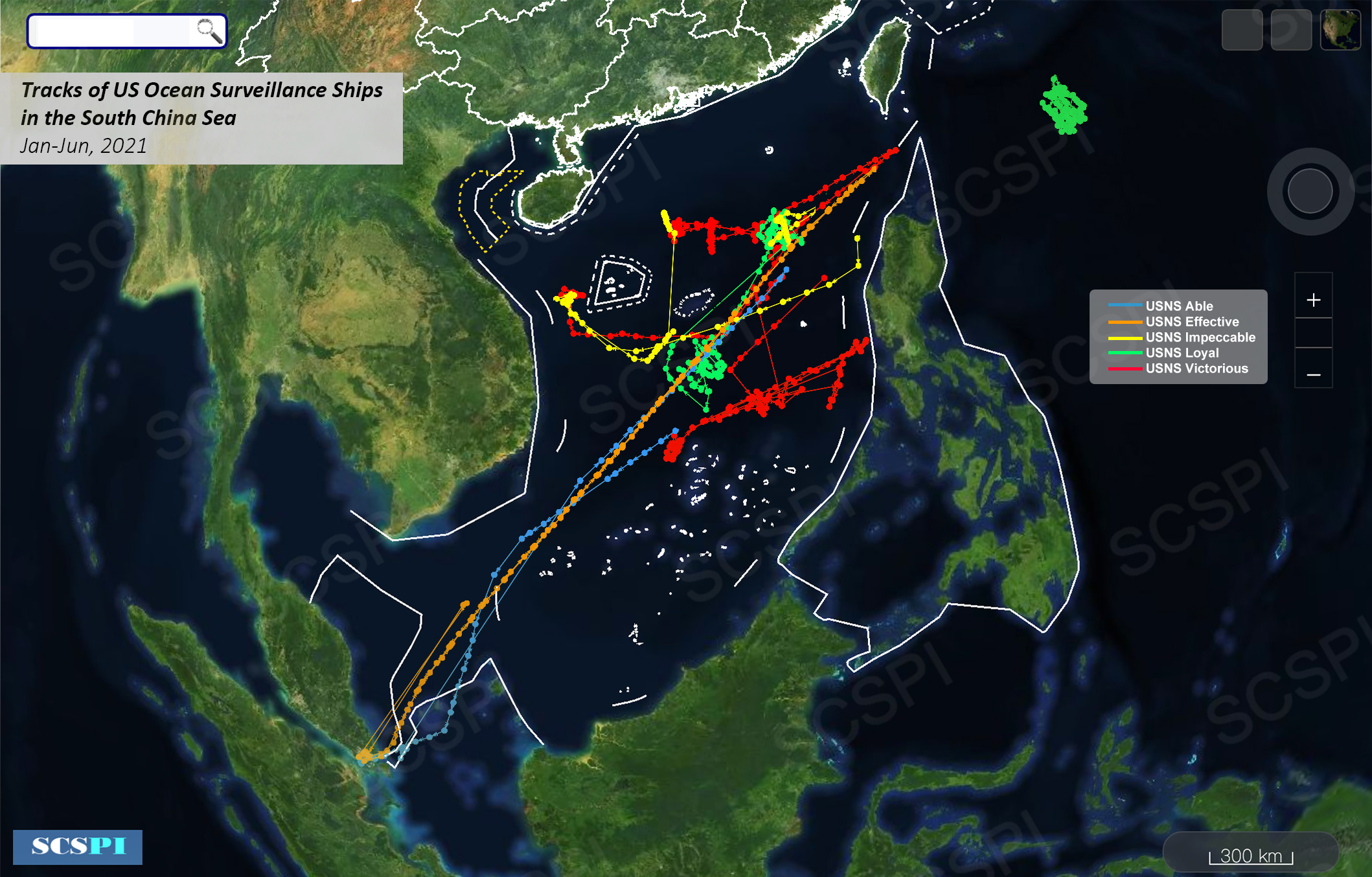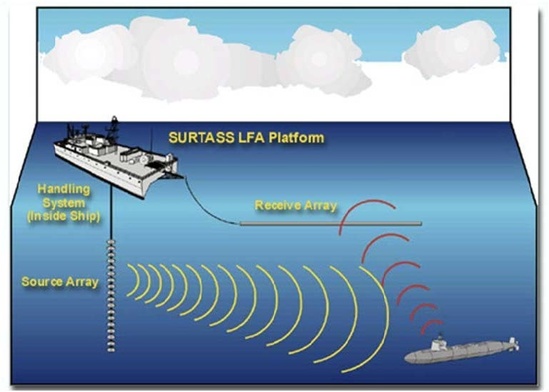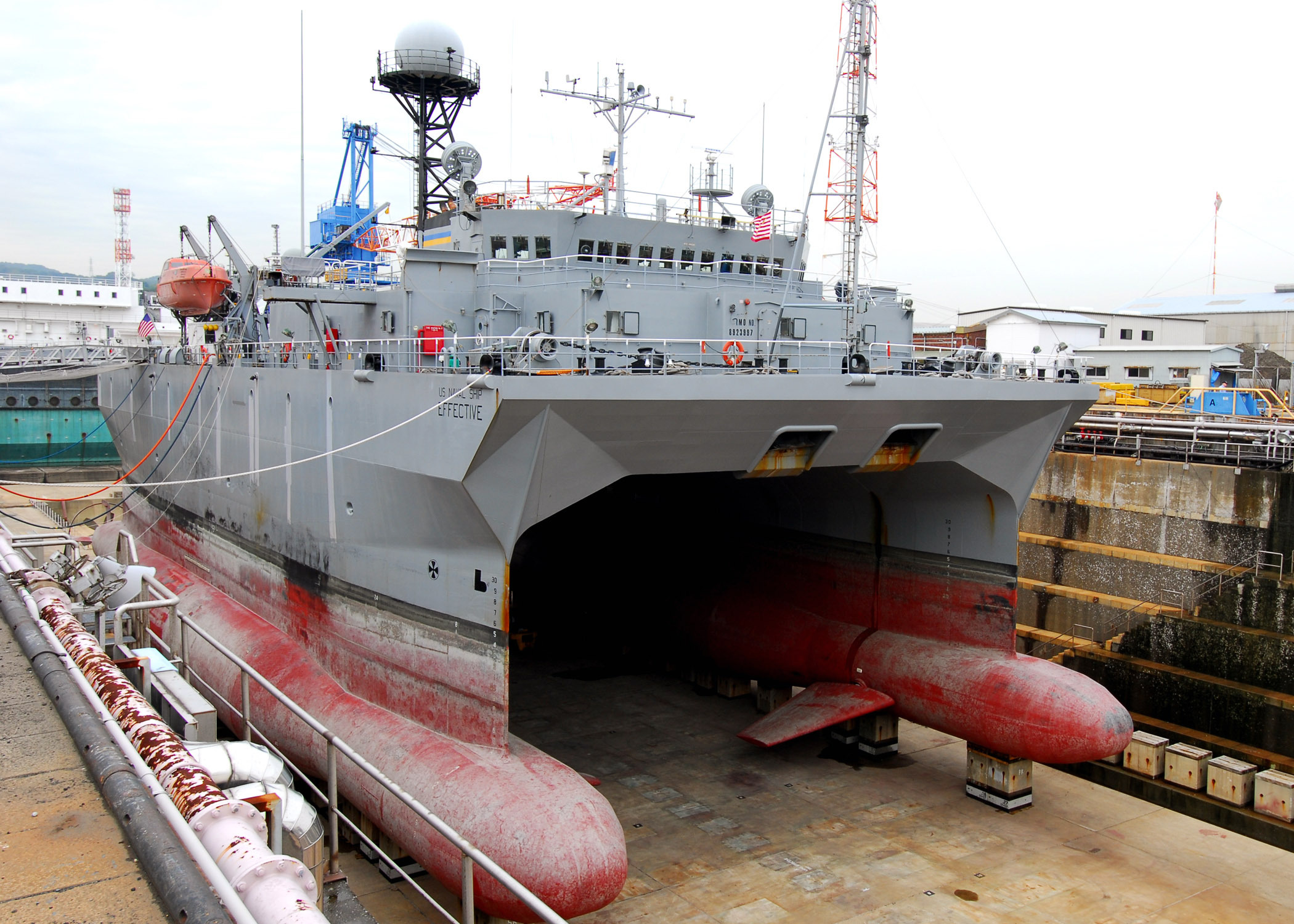Taking the first half of 2021 as an example.
The U.S. military’s reconnaissance on China is inherently multi-dimensional. In the air, the U.S. conducts up to 2,000 reconnaissance flights over the Yellow Sea, East and South China Seas per year; at sea, U.S. ocean surveillance ships (T-AGOS ships) have also been operating near China on a regular basis.

USNS Impeccable (T-AGOS 23)
Operating under a Military Sealift Command Special Mission program, the T-AGOS ships gather underwater acoustical data in support of anti-submarine warfare missions. Developed during the Cold War, the first T-AGOS ships were the Stalwart-class, of which 18 were built and all were decommissioned by 2004. After the dissolution of the Soviet Union, attention shifted to China. Currently, the U.S. Navy operates five T-AGOS ships—four Victorious-class ships (TAGOS 19-22) that entered service between 1991 and 1993, and one Impeccable-class ship (TAGOS-23) that entered service in 2000. According to the annual report of the U.S. Navy’s Military Sealift Command, all five T-AGOS ships have been assigned to the U.S. 7th fleet as early as 2012, with China as a clear target.
Deployment features
In the first half of 2021, the intensity of U.S. maritime reconnaissance efforts, represented by the T-AGOS ships, continued to increase. All five T-AGOS ships in the U.S. inventory carried out surveillance missions in the South China Sea, though with little public attention. SCSPI mapped out the paths through AIS data, with their activities showing the following features:

Paths of all of five U.S. T-AGOS ships in the South China Sea, Jan-Jun, 2021
Firstly, the Paracel Islands and Macclesfield Bank have become the surveillance priority. The sea area is of more than 2,000 meters depth with a complex hydrological environment, which is a perfect place for underwater and anti-submarine operations. In the first half of 2021, the T-AGOS ships conducted intensive surveillance operations near these waters.

U.S. Ocean Surveillance Ships Operating in the South China Sea, Jan - Jun 2021
Secondly, the deployment of the T-AGOS ships to the South China Sea have shown a regular pattern. In 161 days out of 181 days of the first half of 2021, there was at least one ocean surveillance ship operating in the South China Sea. In terms of the rotation, usually one T-AGOS ship would not leave the South China Sea, until another entered the region, achieving a near persistent presence. On average, each operated in the South China Sea for 10 to 40 days.
Thirdly, with effective coordination with other platforms, the T-AGOS ships are actively integrated into wider U.S. operations. When the T-AGOS ships conduct surveillance missions near the Paracel Islands and Macclesfield Bank, U.S. Navy destroyers and maritime patrol aircraft, for example P-8A Poseidons, would also be operating nearby to support each other. In addition, there would also be coordination between the T-AGOS ships. For instance, from February 15th to March 28th, the Loyal and Impeccable were respectively stationed at the east and west ends of the Bashi Channel, conducting joint surveillance on this important waterway.
In addition, the activities of the T-AGOS ships are more targeted. As shown in the figure, the points that are clustered are the region of interest. A new feature shown in the first half of 2021 is that the operating area of the T-AGOS ships have further expanded into waters west of the Paracel Islands.
By closely monitoring China’s underwater activities, the T-AGOS ships could analyze the operating areas and routes of China’s submarines in key regions, therefore providing intelligence support for anti-submarine operations.
How it works
The T-AGOS ships use the Surveillance Towed-Array Sensor System (SURTASS) and Low Frequency Active Sonar (LFA) to detect submarines. The data collected by the T-AGOS ships can also be processed and transmitted via satellite to shore stations for anti-submarine warfare evaluation.
The active part of the system, LFA, with a length of 400 ft and weight of 155 t, is a set of acoustic transmitters suspended on a cable beneath the ship that produce sound between 100 and 500 Hz with a source level of approximately 215 underwater dB. The passive part of the system, SURTASS, with a length of 2614m, which is trailed behind the ship, detects returning echoes reflected from submerged objects.

Diagram showing operation of a Navy SURTASS LFA platform at sea
When conducting surveillance missions, the T-AGOS ships operate at a slow speed of 3 knots. In addition, T-AGOS ships have a special design called Small Waterplane Area Twin Hull (SWATH), which enables greater stability under adverse weather conditions.

USNS Effective. Photo: U.S. Navy
Future plan
As one of the indispensable parts of a modern navy, the ocean surveillance ship is viewed with great importance by countries around the world. The U.S. Navy has proposed a budget to build seven TAGOS(X) ships, each of which is estimated to cost about $400 million, to replace the current five in-service ocean surveillance ships. With the new class of ocean surveillance ships entering service in due course, the frequency and intensity of the U.S. military’s maritime surveillance activities in the South China Sea will likely be further enhanced.

